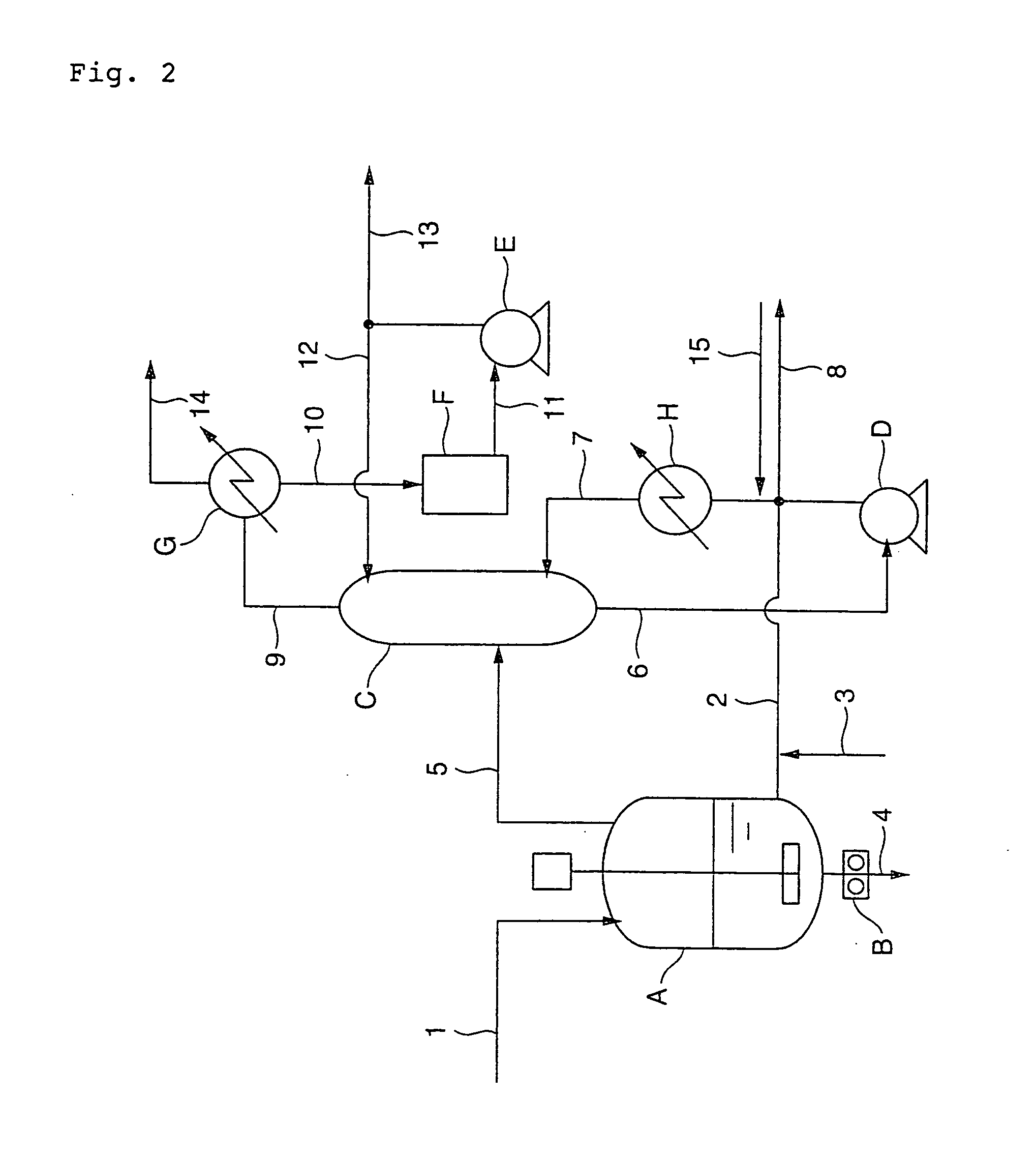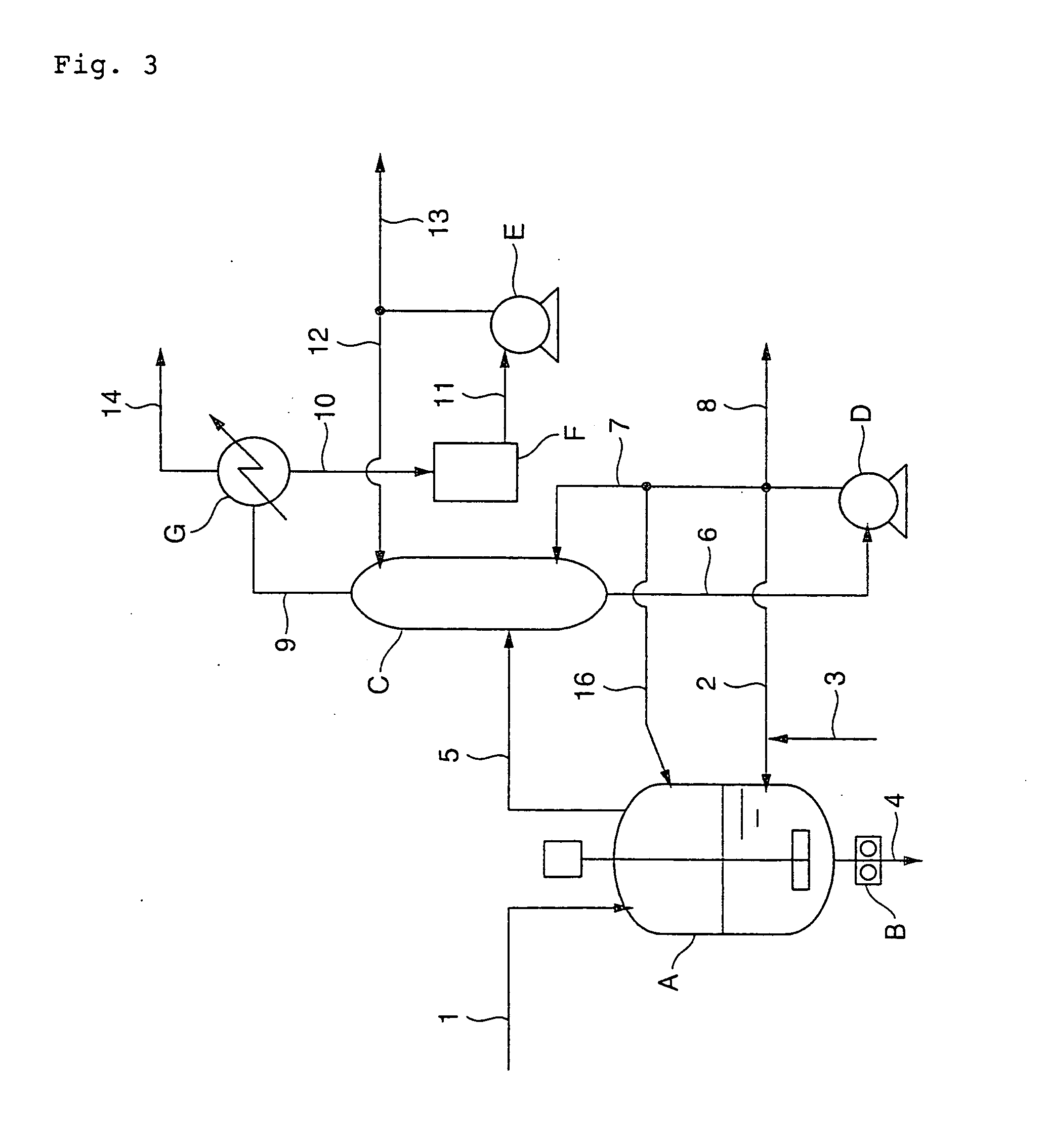Process for Producing Polybutylene Terephthalate
- Summary
- Abstract
- Description
- Claims
- Application Information
AI Technical Summary
Benefits of technology
Problems solved by technology
Method used
Image
Examples
example 1
[0154]PBT was produced through the esterification process shown in FIG. 1 and the polycondensation process shown in FIG. 4 by the following procedure. First, terephthalic acid was mixed with 1,4-butanediol at 60° C. at a molar ratio of 1.00:1.80 in a slurry preparation tank. The thus obtained slurry was continuously supplied at a feed rate of 41 kg / h from the slurry preparation tank through a raw material feed line (1) to an esterification reaction vessel (A) equipped with a screw-type stirrer which was previously filled with PBT oligomer having an esterification conversion of 99%. Simultaneously, 1,4-butanediol having not less than 98% by weight in purity was supplied at a feed rate of 17.2 kg / h through a recirculation line (2) to the reaction vessel (A), and further a 3.0 wt % 1,4-butanediol solution of tetrabutyl titanate as a catalyst at 65° C. was supplied through a catalyst feed line (3) to the reaction vessel (A) at a feed rate of 194 g / h (30 ppm based on theoretical yield of...
example 2
[0159]The same procedure as defined in Example 1 was conducted except that the catalyst solution was supplied at a feed rate of 260 g / hr, and the inside temperature, pressure and residence time of the second polycondensation reaction vessel (d) were changed to 242° C., 140 kPa and 60 min, respectively. As a result, it was confirmed that the amount of THF by-produced was small, and the obtained PBT exhibited excellent color tone and transparency as well as a less number of fisheyes. The analyzed values of the obtained PBT are shown together in Table 2.
example 3
[0160]The same procedure as defined in Example 1 was conducted except that the catalyst solution was supplied at a feed rate of 520 g / hr; 1,4-butanediol through the recirculation line (2) were supplied at a feed rate of 30.0 kg / hr; and the inside temperature, pressure and residence time of the second polycondensation reaction vessel (d) were changed to 241° C., 180 kPa and 60 min, respectively. As a result, it was confirmed that the amount of THF by-produced was small, and the obtained PBT exhibited excellent color tone and transparency as well as a less number of fisheyes. The analyzed values of the obtained PBT are shown together in Table 2.
PUM
| Property | Measurement | Unit |
|---|---|---|
| Temperature | aaaaa | aaaaa |
| Fraction | aaaaa | aaaaa |
| Fraction | aaaaa | aaaaa |
Abstract
Description
Claims
Application Information
 Login to View More
Login to View More - R&D
- Intellectual Property
- Life Sciences
- Materials
- Tech Scout
- Unparalleled Data Quality
- Higher Quality Content
- 60% Fewer Hallucinations
Browse by: Latest US Patents, China's latest patents, Technical Efficacy Thesaurus, Application Domain, Technology Topic, Popular Technical Reports.
© 2025 PatSnap. All rights reserved.Legal|Privacy policy|Modern Slavery Act Transparency Statement|Sitemap|About US| Contact US: help@patsnap.com



